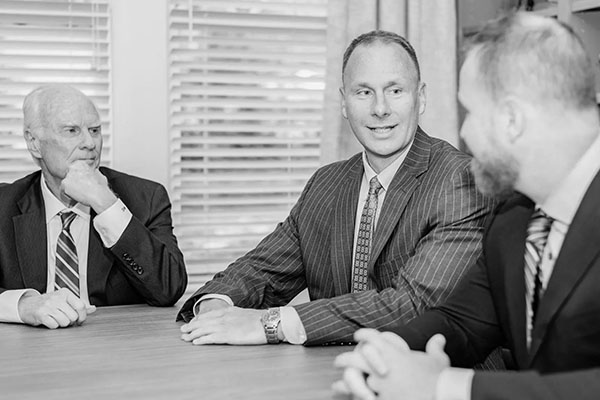Bicycle accidents can lead to serious injuries and life-altering consequences. When you are involved in a bicycle accident, it is important to understand how to prove fault in the case. Knowing who is at fault will determine whether you are entitled to compensation for your injuries, medical bills, and other losses. Establishing fault can be a complex process, but by working through the details and gathering evidence, you can build a strong case. In bicycle accidents, fault is often determined by the actions of drivers, cyclists, and other parties involved. At, Christian & Christian Law , we are here to guide you through the legal process and help you navigate the complexities of your case.
Understanding the Importance of Fault
When a bicycle accident occurs, determining who is responsible is key to seeking compensation for damages. Fault plays a central role in any personal injury case because it shows who is responsible for causing the accident. If someone else is at fault for your bicycle accident, they may be required to pay for your medical bills, lost wages, and pain and suffering. However, proving fault is not always easy. It involves careful investigation and understanding the laws that apply to bicycle accidents.
In many cases, fault can be attributed to more than one party. Sometimes, a cyclist and a driver may both be partly responsible for an accident. Understanding the factors that contributed to the accident is essential in proving who should be held accountable. The first step in proving fault is gathering evidence that shows how the accident happened and who was negligent. This process often involves reviewing police reports, eyewitness statements, and other important documents.
The Role of Negligence in Bicycle Accidents
In legal terms, negligence is when someone fails to act with reasonable care, leading to harm or injury. To prove fault in a bicycle accident case, you must show that the other party was negligent. This means demonstrating that they did not follow the rules of the road or acted in a way that put you in danger. Negligence can take many forms, such as speeding, ignoring traffic signs, or failing to yield to a cyclist.
Founded in 1975, Christian & Christian has deep roots in the community. 
Only Serving People, Never Companies
For instance, if a driver runs a red light and hits a cyclist, that driver may be found negligent. Similarly, if a driver opens a car door without checking for an approaching cyclist, they may be held responsible for any injuries caused. On the other hand, cyclists also have a duty to follow traffic laws. If a cyclist rides against traffic or ignores a stop sign, they could be considered negligent.
Gathering Evidence to Prove Fault
Proving fault in a bicycle accident case requires evidence that clearly shows how the accident happened and who is to blame. There are several types of evidence that can help build a strong case. One of the most important pieces of evidence is the police report. After an accident, the police will usually arrive at the scene and create a report that details what happened. This report often includes information about the conditions of the road, statements from those involved, and any traffic violations that may have occurred. The police report can serve as a starting point for proving fault.
In addition to the police report, eyewitness statements can be valuable. Witnesses who saw the accident unfold can provide an unbiased account of what happened. Their testimony may help clarify who was responsible for causing the accident. If possible, collecting contact information from witnesses at the scene is important so that they can be interviewed later.
Photographs and video footage can also serve as critical evidence in a bicycle accident case. Pictures of the accident scene, damage to the bicycle, and any visible injuries can help tell the story of how the accident occurred. In some cases, traffic cameras or security cameras from nearby businesses may have captured the accident on video. This footage can provide clear proof of what happened and who is at fault.
The Role of Traffic Laws in Determining Fault
Traffic laws play a key role in determining who is at fault in a bicycle accident. Both drivers and cyclists are required to follow the rules of the road, and when these rules are broken, accidents can happen. For example, if a driver is speeding or fails to yield to a cyclist at a crosswalk, they may be held responsible for the accident. Similarly, if a cyclist is riding on the wrong side of the road or fails to signal a turn, they may be considered at fault.
In many cases, the outcome of a bicycle accident case depends on whether any traffic laws were violated. Proving that the other party broke the law can strengthen your claim and increase your chances of receiving compensation. However, it is also possible for both the driver and the cyclist to share responsibility for the accident. This is known as “comparative negligence.” Under comparative negligence laws, the amount of compensation you receive may be reduced based on the percentage of fault assigned to you.
For example, if you are found to be 20 percent at fault for the accident, your compensation may be reduced by 20 percent. Understanding how traffic laws apply to your case is essential in determining fault and protecting your rights after a bicycle accident.
Value of a Personal Injury Case Choosing a Personal Injury AttorneyRelated Videos
Dealing with Insurance Companies
After a bicycle accident, you may need to deal with insurance companies to seek compensation for your injuries and damages. Insurance companies often try to minimize the amount they pay out, so it is important to be cautious when speaking with them. In many cases, the insurance company will conduct its own investigation into the accident to determine fault.
It is important to remember that insurance companies are focused on protecting their bottom line. They may try to offer you a low settlement or argue that you were partly to blame for the accident. Having strong evidence and a clear understanding of how to prove fault can help you negotiate with the insurance company and pursue the compensation you deserve. It is also helpful to have legal representation during this process to ensure your rights are protected.
The Importance of Legal Representation
Proving fault in a bicycle accident case can be challenging, especially if there are multiple parties involved or conflicting accounts of what happened. Having legal representation can make a significant difference in the outcome of your case. An experienced attorney will know how to investigate the accident, gather the necessary evidence, and build a strong case on your behalf.
Your attorney can also handle negotiations with the insurance company and ensure that you are not taken advantage of. By having someone on your side who understands the legal process, you can focus on recovering from your injuries while your attorney works to prove fault and pursue compensation.
Verdicts & Settlements
Seeking Compensation After a Bicycle Accident
If you have been injured in a bicycle accident, proving fault is the first step in seeking compensation. Once fault has been established, you may be able to recover damages for medical expenses, lost wages, pain and suffering, and other losses. The amount of compensation you receive will depend on the severity of your injuries and the extent of the damages.
In some cases, a settlement can be reached without going to court. However, if a fair settlement cannot be negotiated, your case may need to be resolved through litigation. Having an attorney who is prepared to take your case to court if necessary can help ensure that you receive the compensation you deserve.
Proving fault in a bicycle accident case requires a thorough investigation, strong evidence, and an understanding of the law. If you have been injured in a bicycle accident and need help proving fault, Christian & Christian Law is here to assist you. Our team is dedicated to protecting your rights and helping you pursue the compensation you deserve. Contact us today to learn more about how we can support you in your bicycle accident case.











